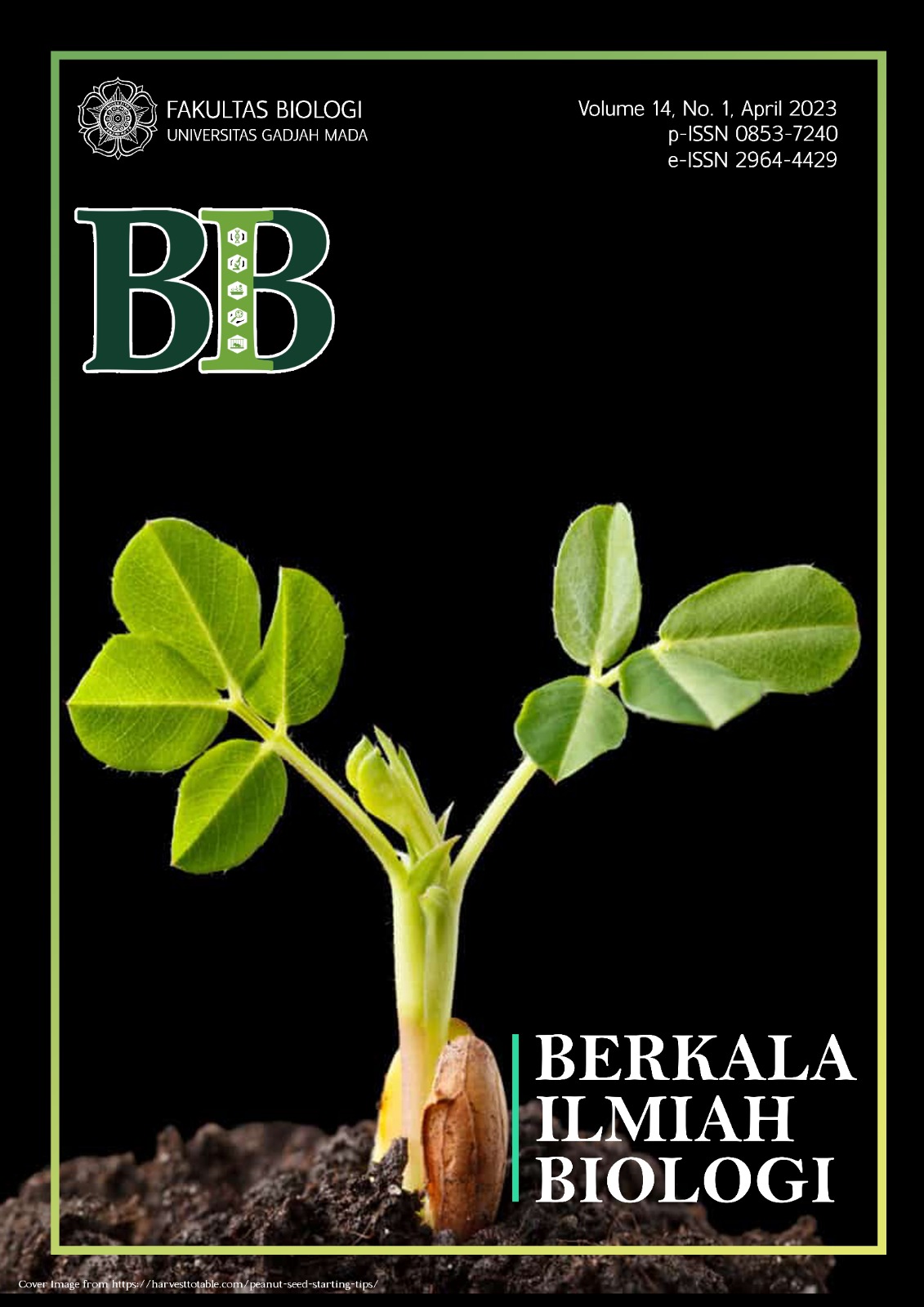Monitoring the Diversity of Amphibian and Reptiles In the Upstream part of Code River Using e-DNA Method
Main Article Content
Abstract
Research on the diversity of amphibians and reptiles on the upstream part of Code River had been done in 2012 and 2017. Result on two previous results were found anurans, snakes and lizards but we did not find any freshwater turtles. Method used on the 2012 and 2017 research was conventional using Visual Encounter Survey (VES). Conventional methods such as VES have limitations, which was the inability to detect difficult-to-find animals such as freshwater turtles. Therefore, a new approach was taken to monitor the diversity of amphibians and reptiles especially to detect freshwater turtles in the Code River, namely the environmental DNA (eDNA) method. The purpose of this research were to monitor the diversity of amphibians and reptiles, and to reveals eDNA sampling efficiency compared to VES. An e-DNA metabarcoding process is conducted with universal CO1 primer on the water sample taken from upstream part of Code River. The results obtained were compared to the data from conventional studies held in 2012 and 2017. The results in 2021 found 12 species of amphibians but all of these species did not naturally distribute in Yogyakarta and even in Indonesia. Furthermore, 5 species of snakes were found, with only 1 species of snake naturally occur in Yogyakarta. Subsequently, we found 6 species of lizards whose natural distribution does not exist in Yogyakarta and even in Indonesia. Finally, we obtained 1 species of tortoise whose natural distribution does not exist in Yogyakarta and even in Indonesia. By far, in Indonesia the identification of amphibian and reptile species in rivers using the e-DNA method has shown less accurate results. The inaccuracy may be due to the lack of specificity of the sequence targets and primers for monitoring reptiles and amphibians in rivers. The target sequences used in this study did not have significant differences between species in reptiles and amphibians, so that the herpetofauna that had been recorded in the Code River were not identified using the e-DNA method. Based on this research, conventional sampling is recommended for monitoring herpetofauna in river areas.
Keywords: Monitoring, Amphibians; Reptiles; Code River, e-DNA
Article Details

This work is licensed under a Creative Commons Attribution 4.0 International License.


